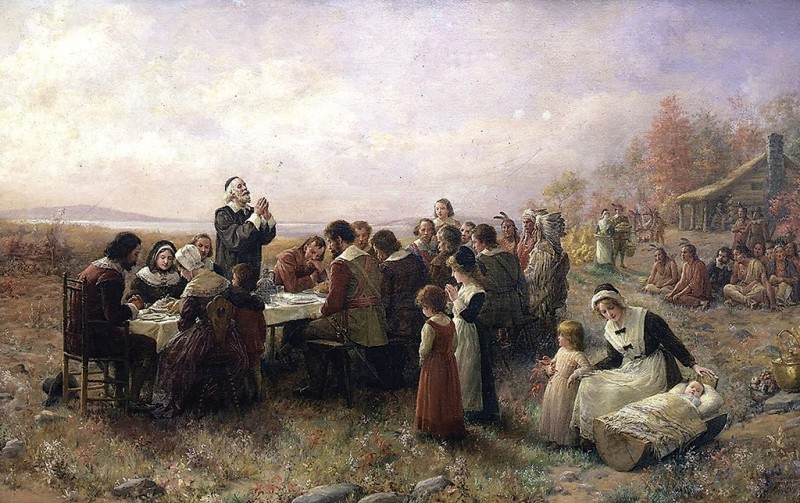By Darryl Lorenzo Wellington
Few people can even recall the name of the tribe that held Thanksgiving with the Pilgrims. We remember the Pilgrims, not the Wampanoag.
The Thanksgiving story subliminally invites us to believe that indigenous Americans have been offered a place at the table.
Thanksgiving is America's guilty holiday, a kind of camouflage, a symbolic excuse to ignore the elimination of whole populations of indigenous Americans by disease or war.
The Pilgrims displayed a distinct lack of generosity when Indians began dying from smallpox.
"It pleased God to afflict these Indians with such a deadly sickness, that out of 1,000, over 950 of them died, and many of them lay rotting above the ground for want of burial," wrote William Bradford, governor of Plymouth Colony.
No, the Pilgrims were not architects of all the injustices against Indians. But they set the tone.
For more on the subject, see Why Thanksgiving Pageants Are Wrong and Change Columbus Day or Thanksgiving?


1 comment:
I've addressed that topic many times. For instance, in Why Thanksgiving Pageants Are Wrong and Playing Indian for Thanksgiving. My Thanksgiving page has links to other resources. But I'm not sure any of the explanations are concise.
Let's see...why is a generic Indian wrong? Because it falsely represents the Wampanoag Indians who participated in the first Thanksgiving. Because it reduces hundreds of different Indian cultures to a single stereotype.
Post a Comment